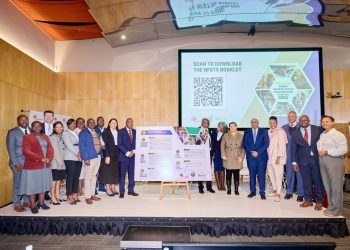
The Bank of Namibia (BoN) on Wednesday raised its repo rate by 25 basis points to 4%, as predicted by analysts.
This was after the South African Reserve Bank last month raised its repo rate by 25 basis points to 4%. However, market experts believe that Namibia is likely to see at least four interest rate hikes in 2022
“This decision was taken following a review of the global, regional and domestic economic as well as financial developments. The MPC is of the view that the increase in Repo rate by 25 basis points to 4.0 percent is appropriate to safeguard the one-to-one link between the Namibia Dollar and the South African Rand. Moreover, this monetary policy stance is also a step towards normalising the current negative real interest rate environment and establishing a positive real interest rate that is conducive to long-term economic growth,†BoN, Governor, Johannes !Gawaxab said in his first Monetary Policy statement for 2022.
IJG Securities’ Eric van Zyl forecasts four more repo rate increases for the year.
“We currently expect a minimum of four more hikes of 25 basis points this year. Inflation in key developed markets remains higher and more persistent than expected at the start of the year which means we are more likely to see more rather than less rate hikes,†he said.
Simonis Storm economist Theo Klein expects BoN to hike its repo rate by 125basis points (bps) by the end of 2022.
“With five meetings left for 2022, this implies a 25bps hike in the repo rate in the next four meetings. With the repo rates between Namibia and South Africa now being equalised, we do expect liquidity levels in the banking sector to improve after having been negative and low during February 2022. Liquidity has been low due to commercial banks earning higher interest on deposits with SARB compared to Bank of Namibia amongst other factors,†he said.
“Namibia can hike by less than South Africa in 2022 due to Namibia observing lower economic growth rates, lower inflation rates, lower credit growth in the private sector and sufficient foreign currency reserves to maintain the currency peg with the Rand. This will greatly depend on the inflation differential between Namibia and South Africa and subsequent capital flows.â€
FNB Namibia Group Economist, Ruusa Nandago, said rates will end the year at 4.5%, which is 75bps above the current levels.
“This is owing to the fact that more hikes are expected in South Africa. Due to the peg of the Namibian Dollar to the South African Rand, Namibia will have to follow rate hikes in South Africa to keep rates on par or higher. Namibia cannot maintain rates below those of South Africa’s as this would threaten the stability of the peg,†she told The Brief.
Â











